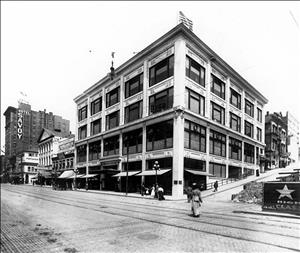On September 19, 1917, the Federal Reserve Bank of San Francisco opens a branch in Seattle. The Federal Reserve Bank of San Francisco serves the Twelfth District of the Federal Reserve System, which includes nine Western states encompassing about one-third of our country's land area. Through its operations, which include handling currency, selling Treasury Bonds, and providing loans to banks, the Federal Reserve Bank facilitates business development. In order to support wartime industrial and agricultural production in its far-flung territory, the bank opens branches in Seattle, Spokane, and Portland in 1917. The Spokane office will close in 1938, but the Seattle and Portland branches remain open in 2008.
The Seattle branch handled currency, processed checks, sold Treasury bonds, and made loans to banks in the northern portion of the Twelfth District. During wartime it helped local industries meet increased demand by providing loans to local banks, which then provided financing to those industries. In some cases the Federal Reserve Bank guaranteed loans made by its member banks to defense industries.
The Federal Reserve Bank also helps the regional economy during peacetime. By meeting local demand for currency and making loans to banks, it helps businesses have access to credit when they need it.
The Seattle branch operated out of leased office space in downtown for its first three decades. When the branch outgrew its space in the Baillargeon Building at 2nd Avenue and Spring Street in the late 1940s, the bank decided to build a permanent home for the branch's operations. In 1950 work started on a new building at the corner of 2nd Avenue and Madison Street, in the heart of downtown Seattle's financial district. Designed by architect William Bain Sr. (1896-1985) of the firm NBBJ (Naramore, Bain, Brady and Johanson), the Moderne-style building opened on January 2, 1951.The downtown location closed in February 2008. The branch moved its operations to a new building in the Longacres Office Park in Renton.

